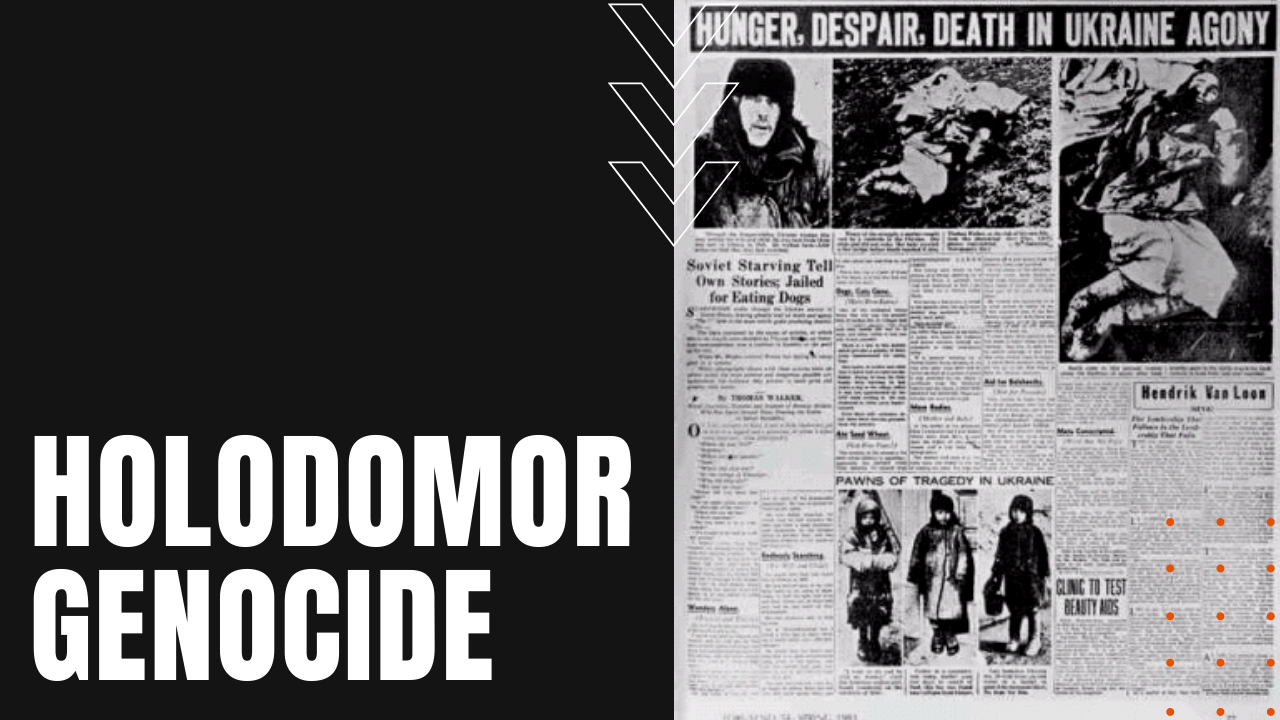Holodomor Genocide: Stalin’s Famine in Ukraine

After the Bolshevik Revolution of 1917 swept away 200 years of the Tsarist overrule, Ukraine began to retake its borders and nationalistic identity both in language, literature and the arts, at the same time instilling in her people a strong yearning for independence from Russia.
Outrage Over Ukraine From Lenin To Stalin
Outraged by Ukraine’s overt embrace of Ukrainian identity, over the ensuing four years, Lenin’s Red Army invaded much of the country, dividing retaken lands between Poland, Romania and Czechoslovakia. By 1929, Russian leader Joseph Stalin created collective farms in Ukraine, kicking wealthy peasants known as kulaks from their farms, while labeling them enemies of the state. Known as the breadbasket of Europe, Ukrainian farmers—a staggering 80% of the population at the time—continued their resistance to collectivism and outside governance, leading to a harvest shortfall by the close of 1932 that fell 60% below target yields established by Soviet planners.
Stalin’s Forced Famine
In response, Stalin ordered the Soviet Secret Police to confiscate Ukrainian food stocks before sealing off Ukraine’s borders, in an attempt to starve a once-proud people to their knees. Known as the Great Famine or Holodomor in the Ukrainian, according to a 1988 U.S. Congressional commission report, Stalin’s crop collectors used long wooden poles with metal points to plumb the dirt floors of farmers’ homes, and if they found hidden stores of grain, many of the offending peasants were never seen or heard from again.
As the famine worsened, many starving Ukrainians began eating pets or consuming flowers, leaves, tree bark and roots, leading one woman to devour dried beans to stave off her hunger, which led to her death after the beans expanded in her stomach.
How Many People Did Stalin’s Manmade Famine Kill?
Starving adults and children alike simply died on their feet in the streets or in fields, leading to the deaths of an estimated four million Ukrainians. By the summer of 1933, many collective farms had only a third of their workers remaining, while prisons and labor camps swelled beyond their capacities. Faced with the prospect of massive food shortages in Russia, by the fall of 1933, Stalin began easing off on Ukrainian food collections, ending one of the most brutal genocides in the history of man.
Although Stalin’s policies resulted in untold suffering and death, his treatment of Ukrainians led to deep-seated feelings of hatred and resentment that still linger to this day, further solidifying a Ukrainian sense of nationalism and thirst for independence, which they finally achieved after the Soviet Union’s collapse in 1991.
In more recent times, Ukrainian sovereignty has yet again been threatened by Russian aggression, this time at the hands of Russian dictator Vladimir Putin, making the history of the Ukrainian people, an ongoing nightmare of Russian dominance in the face of fierce Ukrainian resistance.
